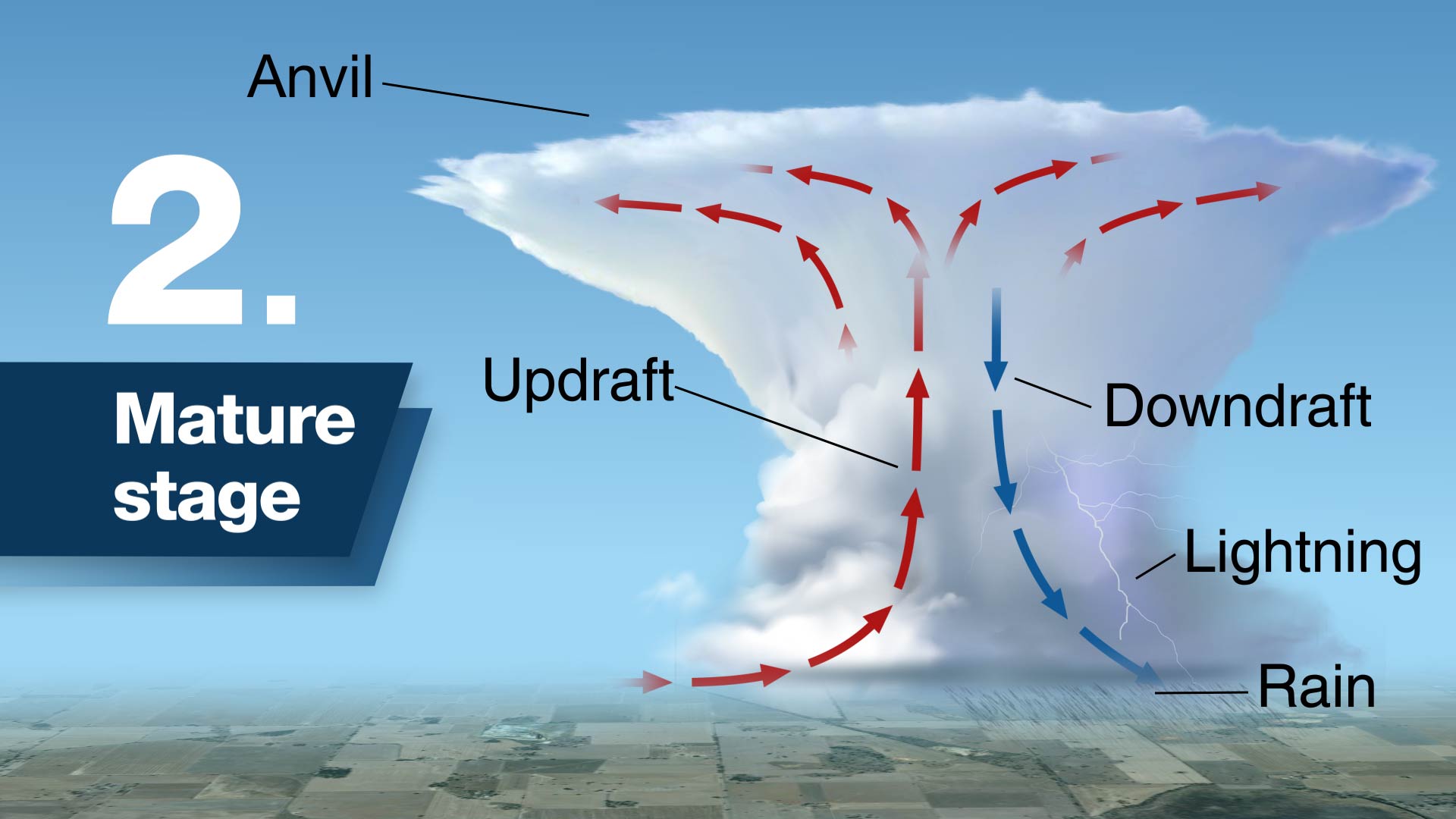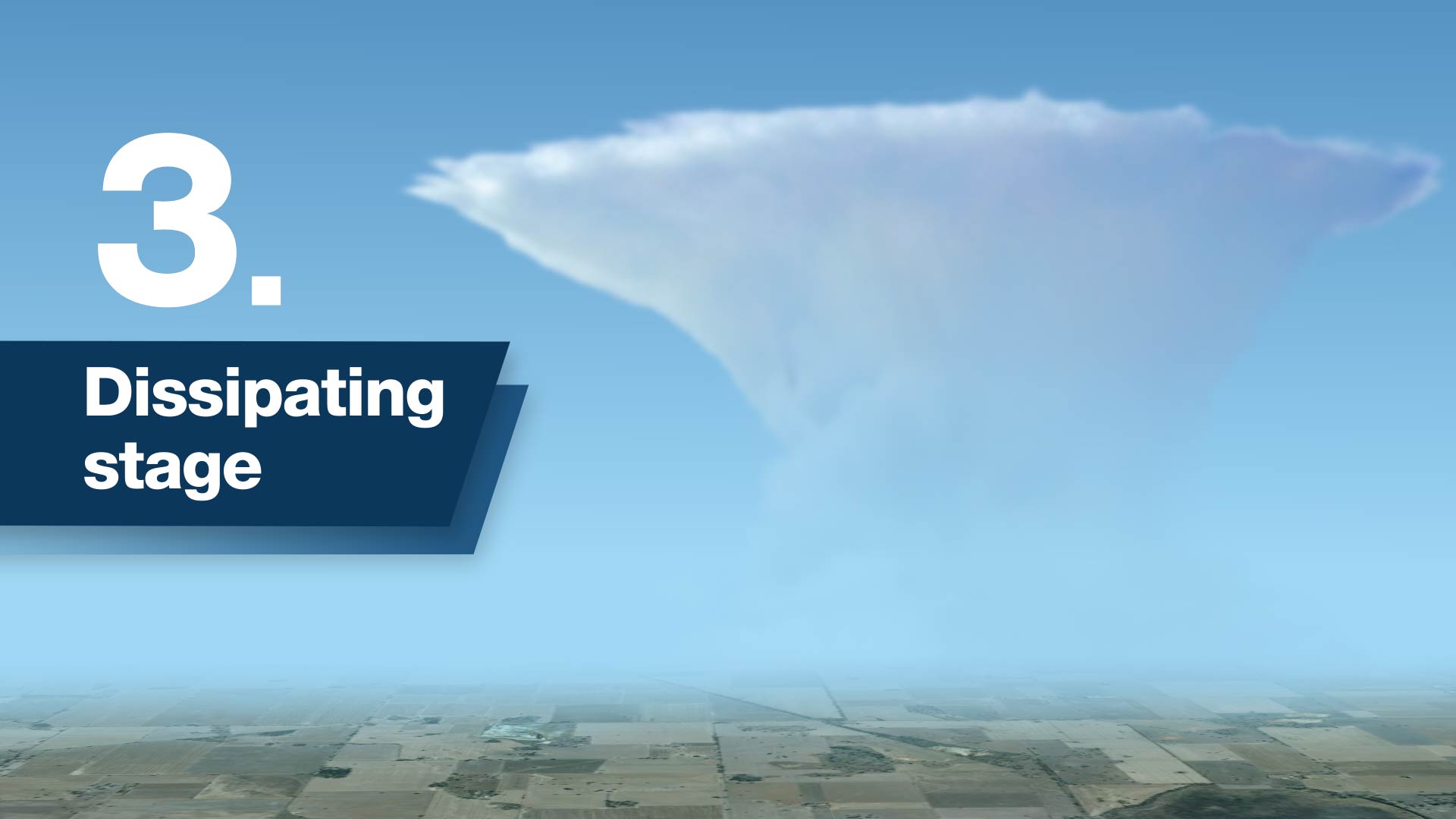AskBOM: What is a thunderstorm?
05 September 2016
Thunderstorms are associated with very tall clouds called cumulonimbus that produce turbulence, lightning and thunder. So what causes them, and what's really going on up there?
How are thunderstorms formed?
Thunderstorms need three ingredients to form:
- Moisture – humid air carrying a lot of water vapour, which can be visible as low clouds or haziness in the morning or many small cumulus clouds throughout the day.
- A lifting mechanism – a force that makes the moist air rise rapidly, such as:
- an advancing cold front, where colder, denser air pushes under the warmer air ahead of it, lifting it;
- orographic lift, when air is forced upwards as it moves over rising terrain, such as mountains;
- sea breeze convergence, as cooler wind from the sea moves inland, lifting the warmer air there; or
- thermal lift, as the day’s sun heats air near the earth, causing it to rise.
- Atmospheric instability – as warm air rises into cooler air above, it will keep rising as long as it is warmer than its surroundings. If the air rises far enough, the moisture in it condenses and forms cloud.
When the atmosphere is particularly unstable, and/or additional energy is drawn in from surrounding winds, thunderstorms can become more intense.
The life of a thunderstorm
A typical thunderstorm lasts for about half an hour to an hour, and goes through three stages:
- Towering cumulus stage, where the entire cloud consists of updraft (air rising).

- Mature stage, when the thundercloud is at its largest and most organised. In addition to the updraft, there's also a downdraft (air descending) where most of the heavy rain occurs. The cloud now produces thunder and lightning, and takes on an ‘anvil’ shape as air at the top can no longer rise any further, so it spreads out sideways.

- Dissipating stage, when the energy supply to the storm is coming to an end, the updraft and downdraft are dying, and the cloud dissolves.

When do thunderstorms strike?
Most thunderstorms in Australia form during the warm season – September to March – when the sun provides a stronger thermal lifting mechanism. We can also experience cool-season thunderstorms, particularly if other lifting mechanisms are strong. Severe winter storms linked to cold fronts are common in the southern parts of Australia.
Can we tell when thunderstorms will happen?
We can forecast broadly where and when thunderstorms are likely to form, but not exactly. This is because very small differences in temperature and moisture make the difference between a large thunderstorm event and no thunderstorm at all.
If thunderstorms are forecast for your area, keep an eye on our website or the BOM Weather app for the latest warnings.
You can check the radar to see whether storms are headed your way, or switch the satellite imagery to ‘Infrared + Zehr’ to highlight deep convection – generally associated with thunderstorms and cyclones.
More information
- Stay up to date with weather warnings
- Severe thunderstorm knowledge centre
- Severe thunderstorms: your questions answered
- Clouds: your questions answered
- Explainer: How does hail form?
- A bolt from the blue: what is lightning?
- Explainer: what is thunder?
- Credit for small image at top left: Rowland Beardsell




Comment. Tell us what you think of this article.
Share. Tell others.